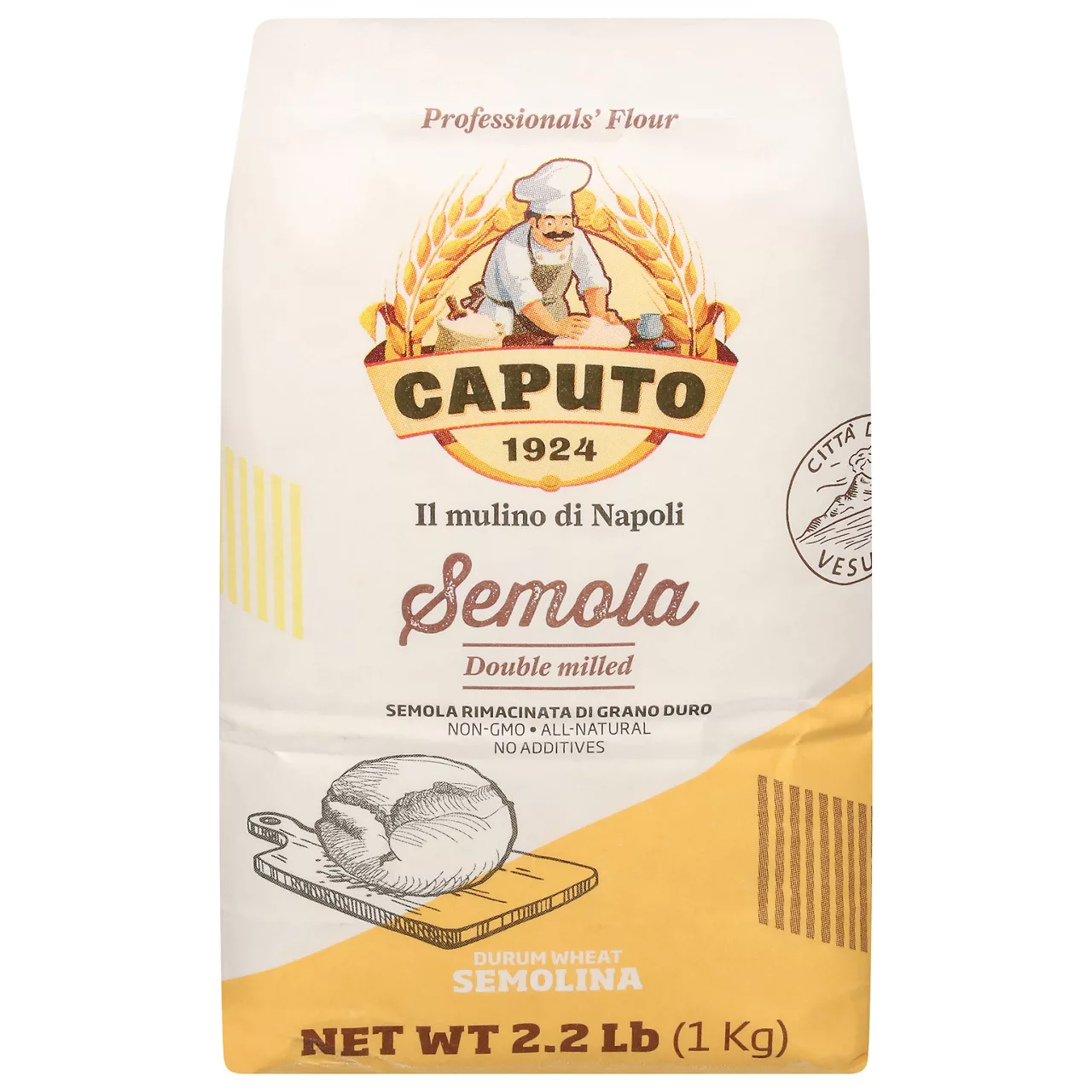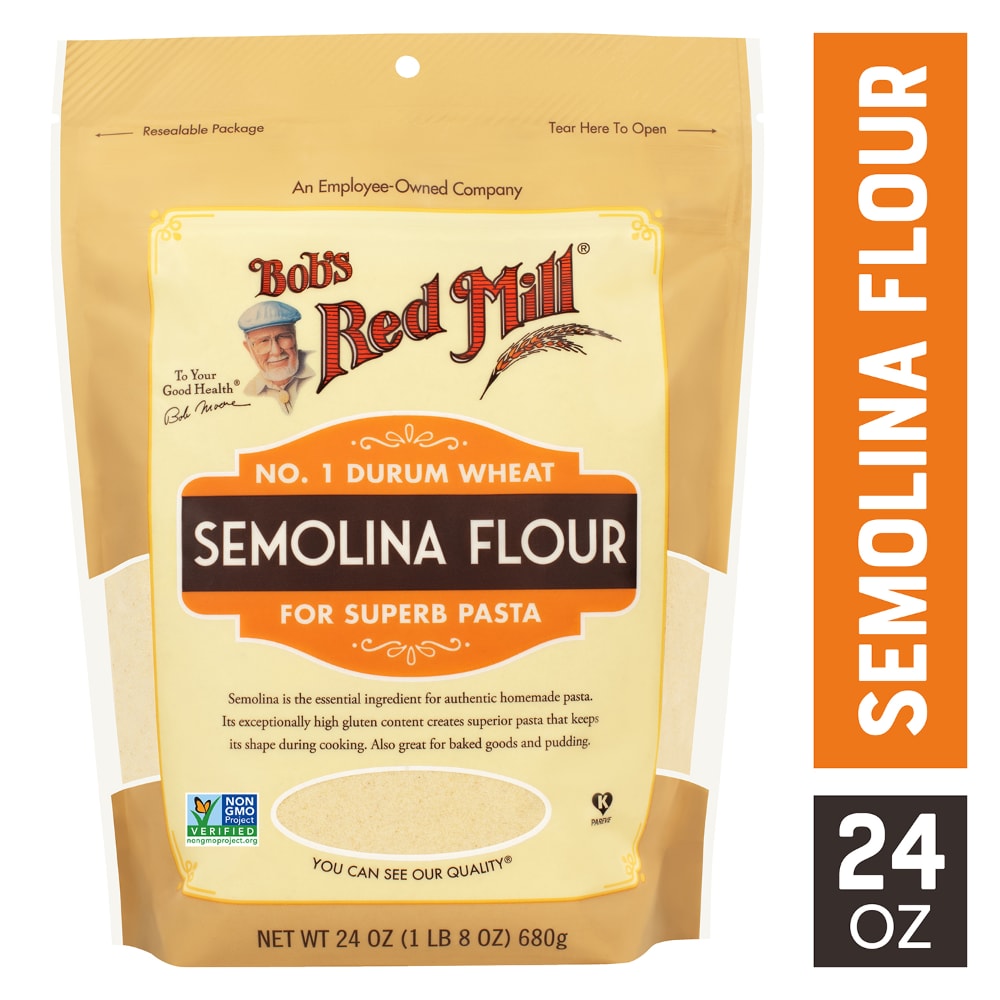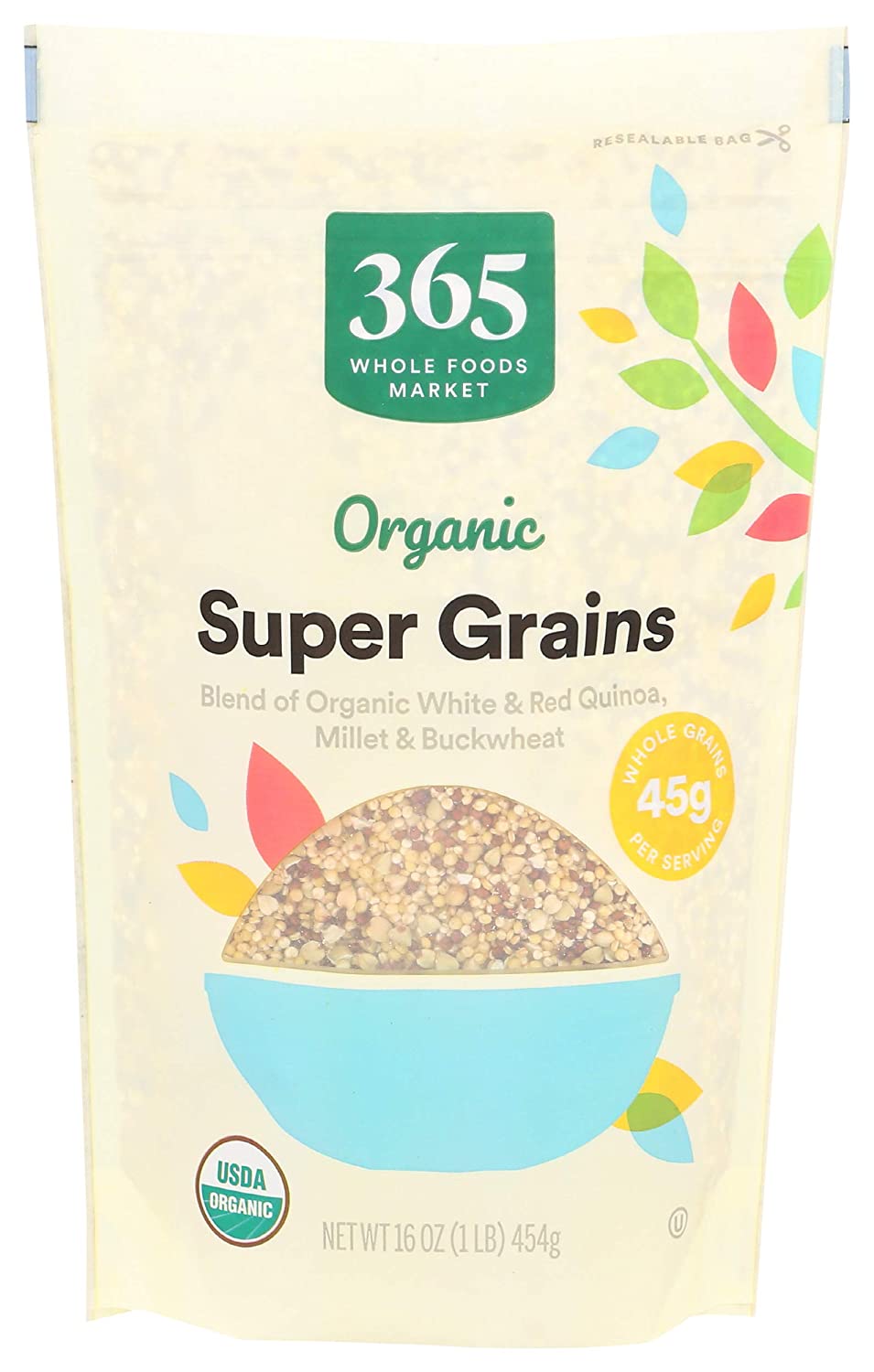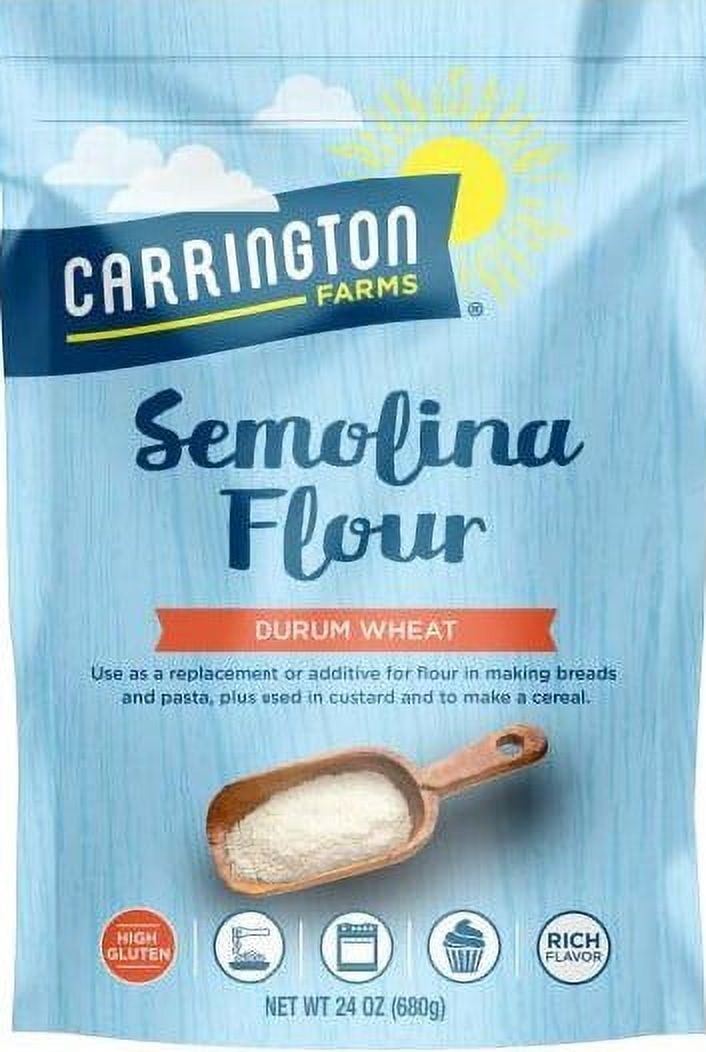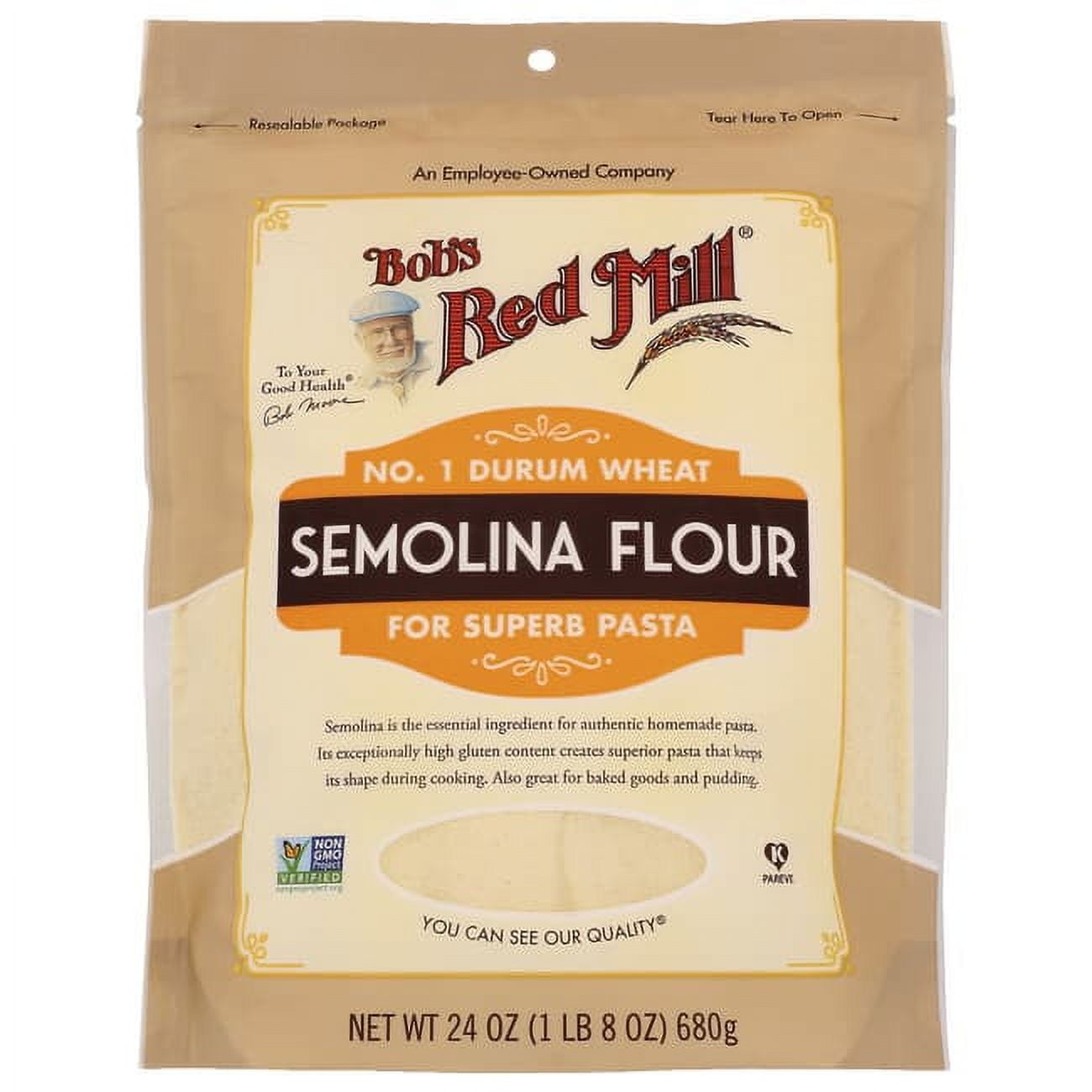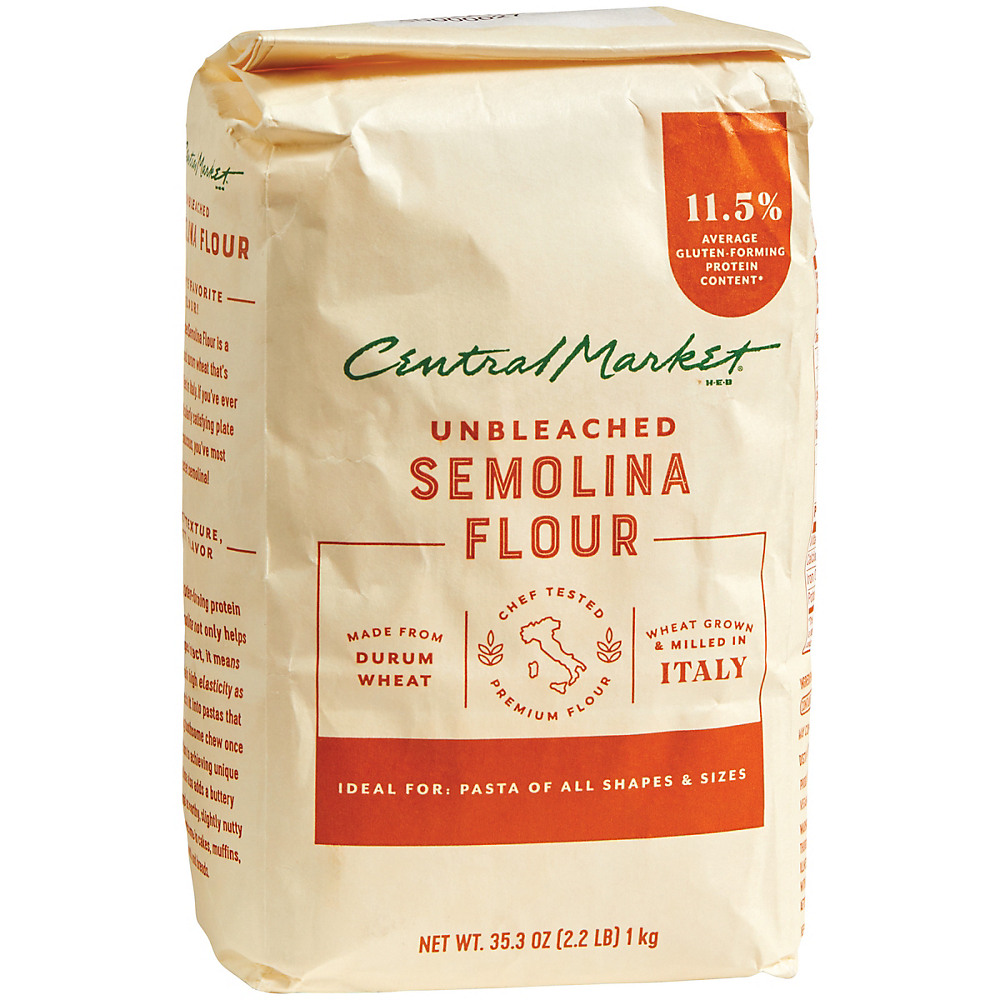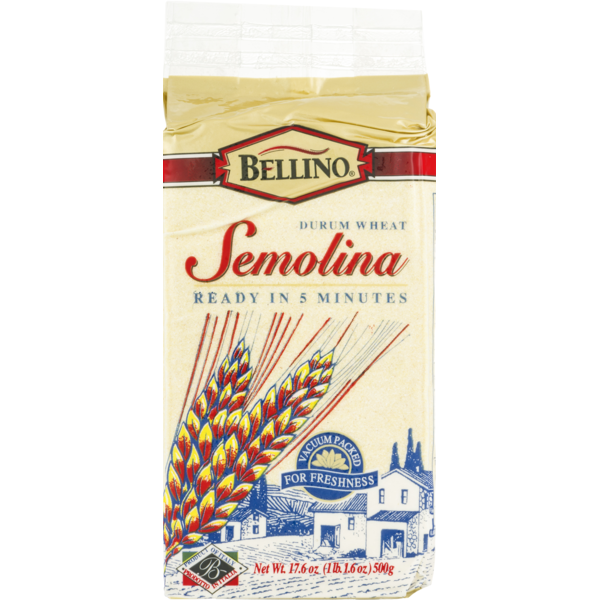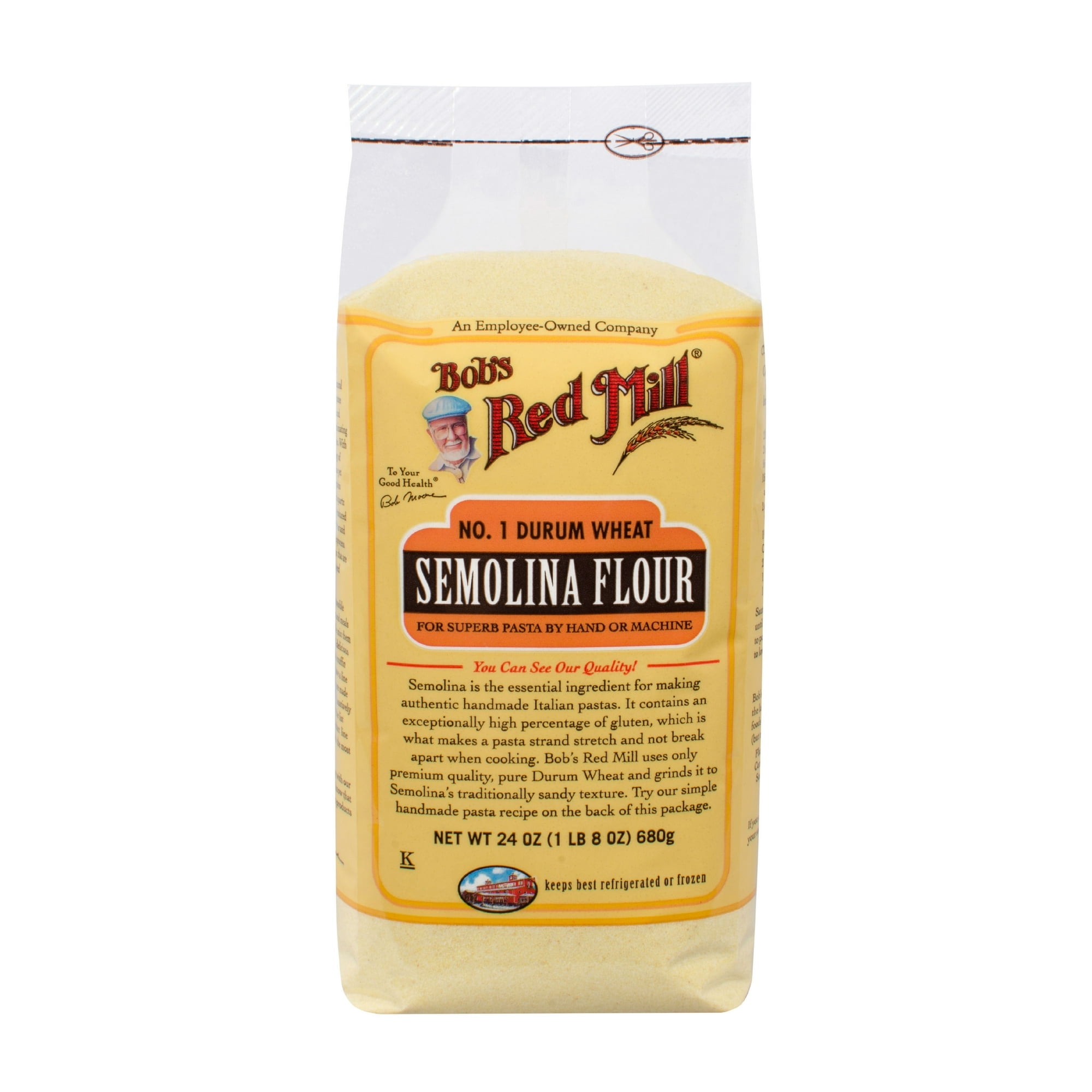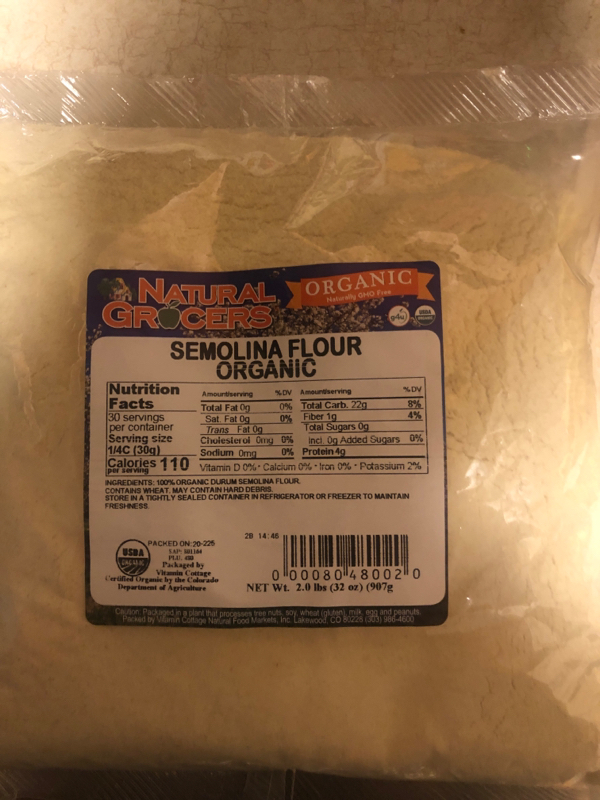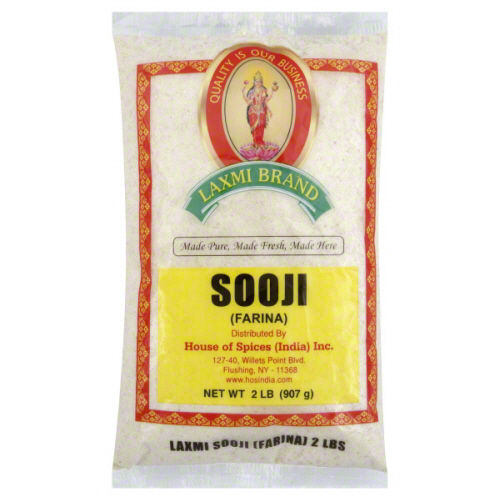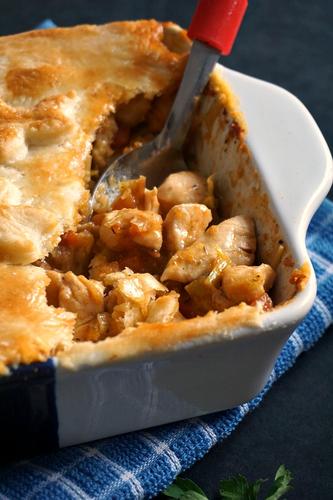MAIN DISHES
BREADS
DESSERTS
Semolina
Semolina is a type of flour made from durum wheat, a hard and high-protein wheat variety known for its yellow hue and coarse texture. It plays a prominent role in Mediterranean, Middle Eastern, and North African cuisines. Available in various grades of coarseness, semolina is primarily used in making pasta, couscous, and an assortment of baked goods.
Consumers and home cooks appreciate semolina for its versatility and satisfying texture in recipes. Apart from its use in pasta and couscous, it lends a unique crumbly texture and slightly nutty flavor to desserts such as halva and semolina cakes. Semolina also works as an ideal dusting flour for pizza stones and baking sheets, preventing dough from sticking.
84%
CARBS
1%
FAT
15%
PROTEIN
180 Semolina Products
Used In 21 Recipes
Semolina Is Frequently Used With
Semolina FAQ
In the culinary world, semolina is often considered a necessary yet misunderstood ingredient. One key point where people go wrong with semolina is viewing it as interchangeable with any type of flour. While regular flour can sometimes be a good substitute for semolina, it will not yield the same texture or color in your dishes. Additionally, semolina requires more water during cooking due to its coarser texture, and not adding enough can lead to unsatisfactory results.
Ensuring the most out of semolina involves knowing where and when to use it. Adopting the right cooking methods is key. For instance, in making pasta, you'll find that semolina provides a chewier texture compared to typical wheat flour. It can also give desserts like cakes a unique, hearty structure.
Less known is the fact that semolina can be utilized as a non-stick surface for baking. Sprinkling it under a pizza crust or bread loaf prior to baking can help to prevent the dough from sticking to the pan, as well as add a crispy element to the base.
Can I use semolina instead of plain flour?
Is semolina healthier than flour?
Why is some semolina yellow?
Is semolina good for baking?
Why is semolina used for pasta making?
Can I make my own semolina flour?
Is semolina gluten-free?
Can I use semolina in place of cornmeal?
How should I use semolina in pizza?
What can semolina be used for other than pasta?
Expiration & Storage Tips
When does semolina expire?
Semolina flour, unopened, can last up to 2 years if stored properly. It’s important to note that this doesn't mean it's unusable after this timeframe, but the quality starts to decrease. Once it has been opened and stored in an airtight container, it typically lasts for about a year. However, if it is stored in a hot, humid environment, it may not last that long. If you have frozen your semolina (which is not commonly done), use it within 6 months to ensure the best quality.
How do you tell if semolina is bad?
You can know your semolina has gone bad through the smell and taste. Semolina that's spoiling usually gives off a stale or rancid odor. It might also taste sour or unusual. Additionally, if there are any signs of mold or bugs, throw it away.
Tips for storing semolina to extend shelf life
• Always store semolina in cool, dark and dry places. \n\n• Transfer the semolina to an airtight container after opening to maintain freshness.\n\n• While not common, you can store semolina in the freezer to extend its shelf life. If you choose this option, let the flour come to room temperature before using.\n\n• Consider storing in the fridge if your environment is particularly hot or humid.
EXPIRES WITHIN
10 - 14
MONTHS
Substitutes
Health Info
Macros
34g
CARBS
0g
FAT
6g
PROTEIN
Allowed on these diets
LOW FAT
HIGH CALCIUM
VEGETARIAN
MEDITERRANEAN
VEGAN
LACTOSE FREE
Contains these allergens
WHEAT

